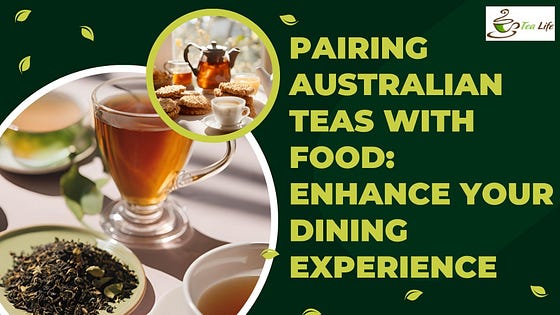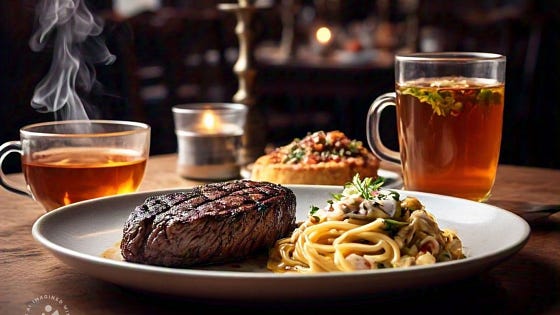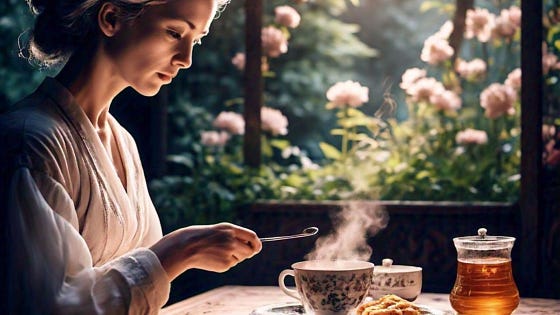Pairing Australian Teas with Food: Enhance Your Dining Experience

Tea is not simply a beverage; it’s an experience that may complement your meals and enrich your dining experience. Australian teas, noted for their distinct tastes and high quality, provide unlimited opportunities for mixing with diverse dishes. By picking the appropriate tea to match your cuisine, you may uncover new levels of flavor and scent. Here, we look into how to mix Australian teas with food to create harmonious and delicious culinary experiences.
The Art of Pairing Tea with Food
Pairing tea with food is an art that balances tastes, textures, and scents. Australian teas, with their various qualities, are great for exploring this culinary harmony. The trick is in recognizing the properties of the tea and the meal you desire to combine. For instance, light teas work well with delicate tastes, while strong teas may stand up to rich and savory foods.
Whether you’re eating breakfast, a light lunch, or a big supper, there’s an Australian tea that may match your meal wonderfully.
Breakfast Pairings: Start Your Day Right

Breakfast is an essential meal, and the correct Australian tea can make it even better. Here are some pairs to consider:
- English Breakfast Tea: This robust and malty tea works nicely with classic breakfast foods including eggs, toast, and sausages. Its powerful taste matches the richness of the meal.
- Lemon Myrtle Tea: This light and zesty Australian tea works well with fresh fruit salads, yogurt, or cereal, delivering a delightful start to your day.
- Eucalyptus Tea: Known for its relaxing effects, eucalyptus tea combines beautifully with honey-glazed pastries, bringing a gentle sweetness to your morning.
Midday Pairings: Elevate Your Lunch
Lunchtime is a wonderful chance to try with Australian teas. Depending on the meal, you may pick teas that enhance the flavors:
- Green Tea Blends: Light and grassy Australian green teas go nicely with salads, sushi, or grilled seafood. Their refreshing freshness cuts through greasy foods and improves delicate tastes.
- Rooibos Tea: With its nutty and somewhat sweet character, rooibos tea compliments roasted vegetables, chicken wraps, or quiches.
- Wattle Seed Tea: This distinctively Australian tea has a rich, nutty taste that goes nicely with creamy soups or pasta meals.
Afternoon Delights: Tea and Snacks
Australian teas flourish at afternoon tea, blending perfectly with nibbles and sweets. Some classic pairings include:
- Black Tea with Lemon: A mainstay of afternoon tea, black tea combines remarkably well with scones, especially when served with clotted cream and jam.
- Hibiscus Tea: This vivid and tangy tea works nicely with zesty treats like lemon tarts or orange-flavored biscuits.
- Peppermint Tea: The pleasant tones of peppermint tea make it a fantastic companion for chocolate-based delicacies, such as brownies or truffles.
Dinner Pairings: A Perfect Evening Match

For supper, Australian teas may replace wine as a refined accompaniment choice. Their richness of taste enriches savory dishes:
- Smoky Black Tea: A tea like Australian smoked black tea works nicely with grilled meats or barbecue, its smoky overtones reflecting the tastes of the dish.
- Chamomile Tea: Light and flowery, chamomile tea is a good complement with light, creamy pastas or seafood meals.
- Bush Tea: This classic Australian tea, with its earthy taste, works nicely with roasted lamb or vegetable casseroles.
Sweet Endings: Desserts and Tea
Desserts are a natural partner to tea, and Australian teas provide a broad choice of alternatives to compliment your sweet creations:
- Vanilla-Infused Tea: This tea’s creamy and sweet flavor improves vanilla-based delicacies like panna cotta or custards.
- Rosella Tea: With its tart and fruity taste, rosella tea works nicely with berry pies or cheesecakes.
- Aniseed Myrtle Tea: This tea’s licorice-like flavor is a perfect complement for spicy pastries or gingerbread.
Tips for the Perfect Pairing

- Balance the Strength: Match the strength of the tea with the meal. Light teas mix with delicate foods, while strong teas complement rich, powerful tastes.
- Consider Complementary Flavors: Look for similarities or contrasts. For example, a sweet tea may balance a hot food.
- Experiment and Enjoy: Pairing tea with food is subjective, so don’t be hesitant to explore different combinations.
Conclusion: Discover the World of Australian Teas with Tea Life
Pairing Australian teas with food is a lovely way to improve your eating experience. From breakfast to dessert, these teas give a distinctive complement to every meal, complementing tastes and generating memorable moments. Whether you’re a seasoned tea connoisseur or just starting your adventure, the range of Australian teas guarantees there’s something for everyone.
Ready to improve your meals with the ideal tea pairings? Explore the greatest collection of Australian teas at Tea Life and find your favorites. Transform your daily meals into amazing dining experiences — one cup at a time.
.jpg)
Comments
Post a Comment